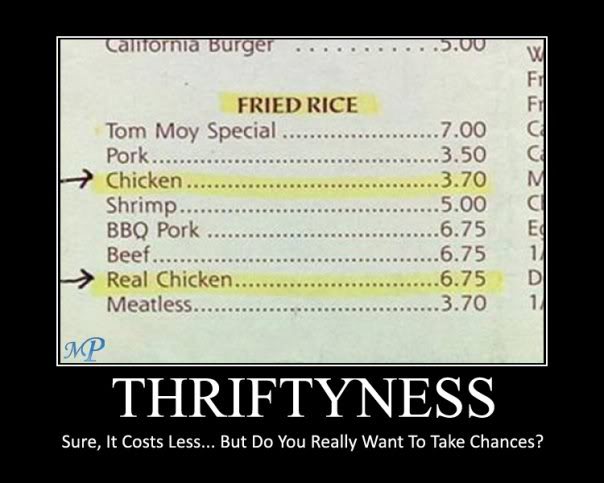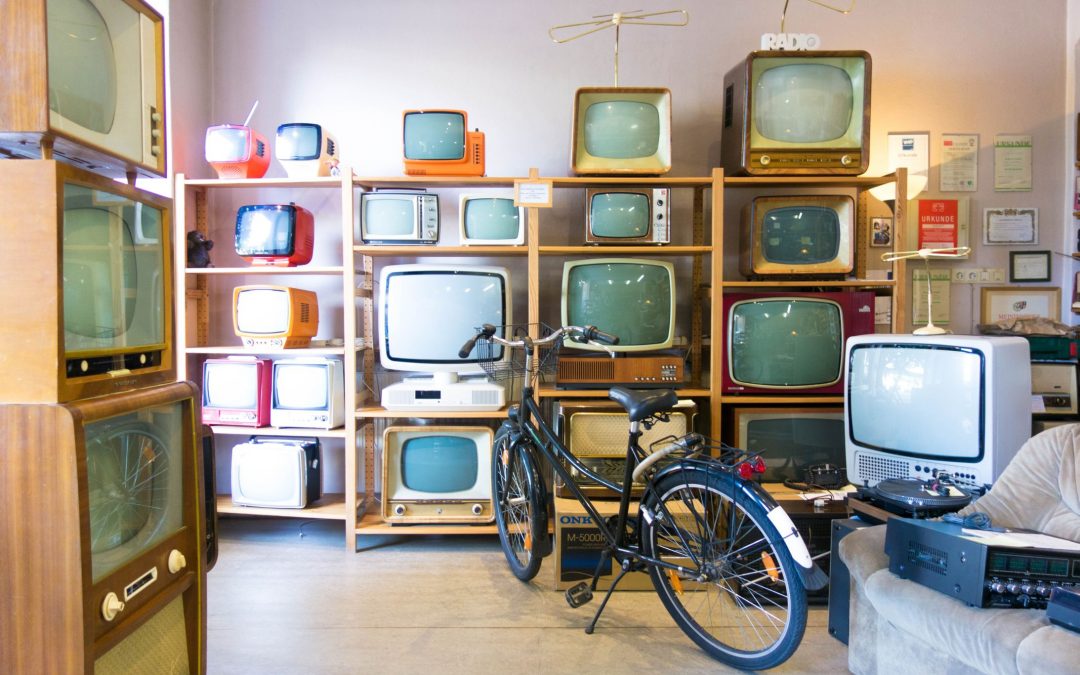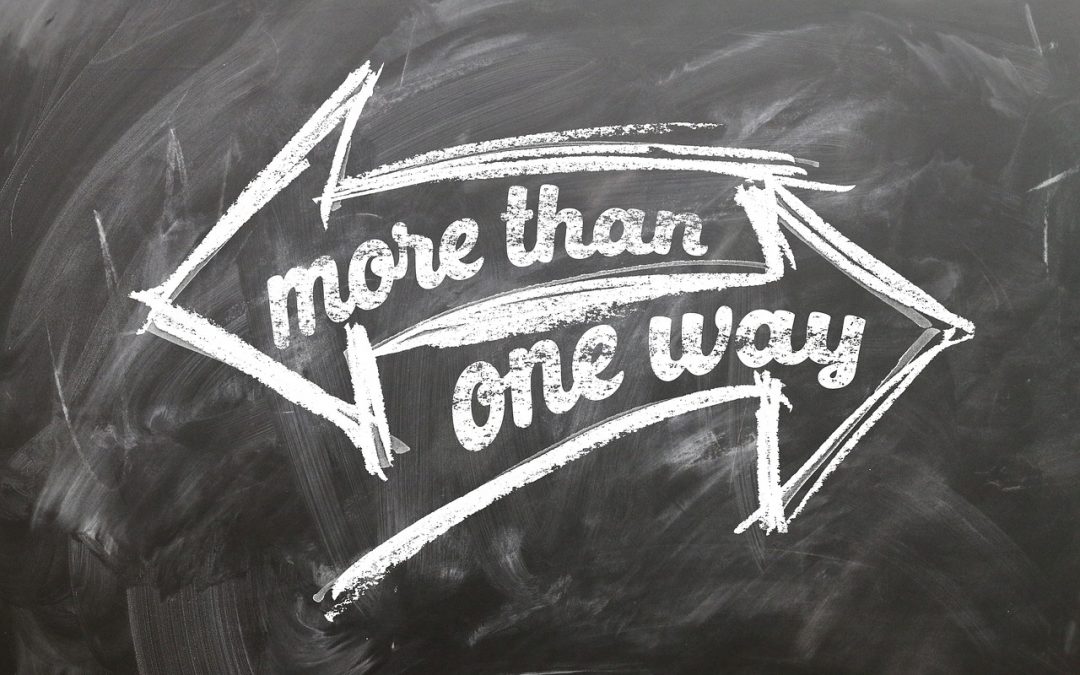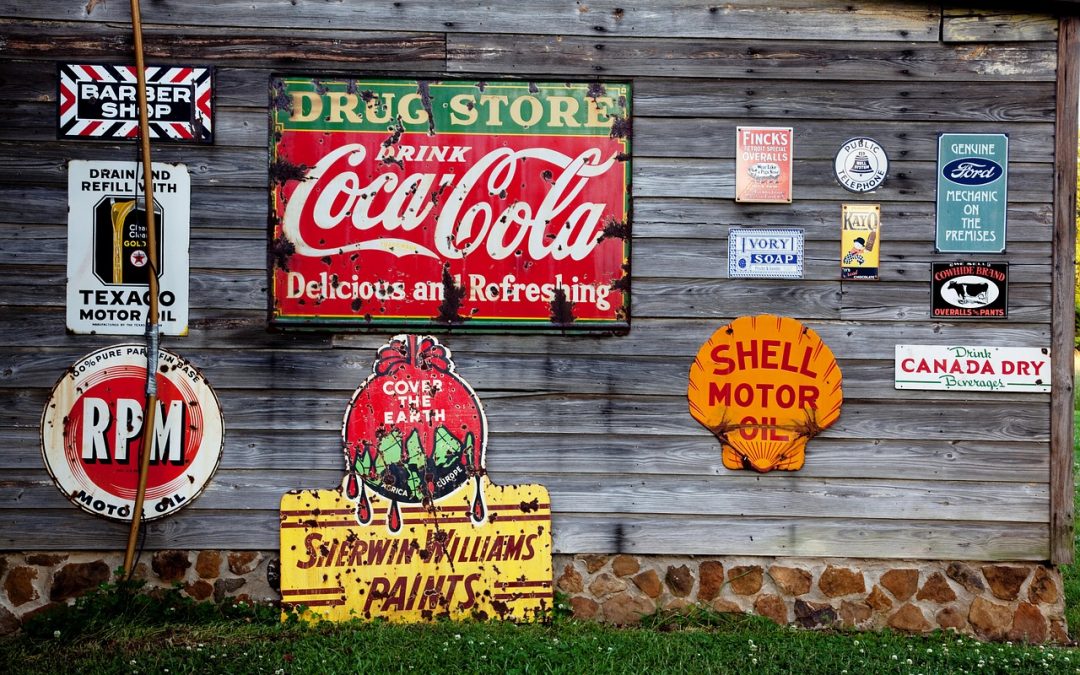
by Scott Howard | May 31, 2018 | Marketing and Advertising Insights, The Not-So-Secret Writings of ScLoHo, Uncategorized, WOWO Fort Wayne Radio Advertising with Scott Howard
Stop Offering Discounts & Make More Money because you can’t bribe your way to success.
Want to increase your business revenue?
Want to get rid of those annoying price sensitive customers who seem to be the biggest pain yet spend the least amount of money?
It’s a simple solution but it takes guts.
Stop discounting.
Enough with the coupons.
Say goodbye to the people who will only buy from you because of the deal you gave them.
What we as consumers really want is to trust you and your business. Be honest. Don’t lie. The under-promise and over-deliver mantra is still a good rule to live by.
A friend of mine was in an auto accident recently. He made the mistake of going to the autobody shop recommended by his insurance company. Ron’s accident was a bizarre one. A woman drove her vehicle over the front end of his. Kinda of crushed the engine area.
What happened next is exactly what you don’t want to do if you are in business.
- The insurance company took nearly two weeks to send a claims adjuster to look at his car.
- The car was towed to a body shop that fixed the exterior, but ignored the real issues and damage under the hood. Supposedly it was all fixed.
- Ron then took it to an auto repair place for an estimate on the noises that were still there and the price tag was nearly $2000.
- Ron went to get an estimate from the dealership he bought the car from and they told him his car was not safe to drive because the motor mounts were broken. So the original body shop and the auto repair shop BOTH missed this important safety issue.
Ron is going to insist that the car is repaired correctly or he is compensated fairly. So far everyone he has dealt with from his insurance agent down the line have failed him.
Price wasn’t an issue. Getting the job done right was all that mattered.
And that’s what all of us want, with a couple of exceptions. There are always a group of people who are conditioned to be price shoppers and they are hard to convert. Also, depending on the product or service, some things we want to buy cheap.
But if you think the only way you can get business is to have the lowest cost, most of the time you are mistaken. If you need help figuring out why people should spend their money with you, let’s talk. I can help.

by Scott Howard | May 24, 2018 | Marketing and Advertising Insights, ScLoHo's Collective Wisdom, The Not-So-Secret Writings of ScLoHo, Uncategorized, WOWO Fort Wayne Radio Advertising with Scott Howard
As we head into the unofficial summer season of June, July and August, the three months between Memorial Day and Labor Day, I want to address a headline I saw again and give you an insiders perspective on The Decline of Mass Media.
Why talk about it now? Well, television viewing habits in years past were different during summer time, with the major networks showing summer reruns instead of new episodes. But hang on because I’m getting ahead of myself.
What is mass media anyway? Perhaps traditional media is a better term. Television, Radio, Newspapers and Magazines are the traditional media that have been the mainstay since the 1950’s and before.
Newspapers are continuing to struggle. Lay offs and shut downs have been occurring for nearly two decades, due to the rise of the internet. One story I read this month blamed the owners for cutting staffs.
The Denver Post cut the newsroom from 184 journalists to 99, according to the story. Other cuts at other newspapers were also harsh. 73 reporters down to 10 while another paper went 45 to 12 journalists. Locally in Fort Wayne, the afternoon paper ceased publication, and instead gets one sheet in the morning paper and an online edition. I saw friends of mine in the newspaper business in town leave either on their own or due to cutbacks. I was once tempted about 8 years ago to work for their online division but am grateful I stayed put.
The company I work, Federated Media sold the one newspaper they owned a couple years ago because it was nearly impossible to be profitable.
When I say the internet is the reason for the decline in print, it’s really a combination of things related to the internet.
Accessibility for one. 20 years ago most of us owned a desktop computer with a dial-up modem at home, if we had a home computer. 12 years ago laptops took over as the primary personal computer device. And did you realize that the first iPhone debuted in 2007, ushering in the smartphone revolution?
Online Content is the other contributing factor. No need to wait for the morning paper to check the weather or the score. Newspapers have tried to replace their dwindling subscriber numbers with paywall subscriptions, but the math doesn’t work. If you don’t have the readers, the advertisers will also go away and the decline has been going on for too long.
Declines in the magazine publishing industry are similar. What seems to have survived in print is specialized publications. Smaller but targeted readership than mass media.
Another way the internet has changed the media is the television industry. The New York Times featured a story that I read online about the future of broadcasting: Why Traditional TV Is in Trouble.
Here’s a few quotes:
Ratings are on the decline, especially among young people, some of whom don’t even own televisions. It’s hard to keep up with the many devices and apps people now use to watch shows. And there is a host of material from Silicon Valley that is competing for viewers’ attention, including Google’s YouTube, Facebook and Netflix. It all adds up to a precarious situation for broadcast TV.
Advertising on TV has long been the best way for marketers to reach a large number of people at one time. And it is still a formidable medium. But cracks are showing.
and:
The hottest shows on TV networks — which command the highest ad prices — are attracting older viewers, which is a challenge for brands that want to reach millennials and teens. For instance, this season’s top-rated show, the revival of “Roseanne,” has a median viewer age of 52.9 years. The network show with the lowest median age is “Riverdale” on the CW, at 37.2.
The TV networks will be able to survive by reinventing themselves much like radio stations did when television became a media force last century. But the local TV stations? My advice if you want to reach anyone younger than Baby Boomers, good luck. All of my kids are in their 30’s and none of them are watching broadcast TV, some don’t even own a television. They get their video content online. Even my wife and I watch just as much video content on something other than a TV or if we do, often it’s days later and the local ads are not even seen.

So what is taking the place of traditional broadcast TV as a mass media?
Netflix, Amazon Prime Video, YouTube, to name a few. Alternatives to cable like Sling, Hulu and Roku. These are all offering the best of both worlds for advertisers. You get to reach people watching video content but you get to target your ads to specific audiences, one of the technical marvels of the internet.
Here’s a quote from a newsletter I received from Google:
More than half of 18 to 49-year-olds in the U.S. either don’t watch a lot of TV or do not subscribe to TV. But that doesn’t mean TV content and TV screens are on their way out. In fact, the TV screen is the fastest growing screen for YouTube content, with 70% growth in the last two years.
Let me address the radio broadcasting industry too. It was the first broadcast mass media and WOWO radio, the station I work for is over 90 years old. There are two categories of traditional broadcast radio stations these days, and I’m not talking about AM and FM. The two categories I am referring to are talk based programming and music based programming.
Radio broadcasting started out with network radio shows from NBC, CBS, ABC and the Mutual Broadcasting System and eventually they evolved to what we have today.
In Fort Wayne, Indiana, there are 37 radio stations within close listening range. Some are duplicates of the same programming on different signals, like WOWO 1190 AM is the same as WOWO 107.5 FM, so let’s say there are 25 separate and individual choices. This is also a way of targeting your advertising. The best local radio stations keep an emphasis on local content, stuff you can’t get by listening to Spotify or Pandora.
Federated Media has 6 stations in Fort Wayne, four are music based, two are talk. I work for the talk stations, WOWO and our ESPN affiliated station. Both offer a combination of local and national programs. There are specific characteristics of WOWO listeners that help me determine if advertising on WOWO would be a good idea. Want to reach grown-ups? Let’s talk. Want to reach teenagers? I’ll connect you with someone who works for one of our music stations.
Not all radio stations and radio broadcasting companies are the same. Overall radio listenership has remained pretty steady for the past decade. Over 90% of everyone age 12 and older listens every week. However smart radio stations and companies are staying ahead of the trends that we see going on around us.
For years, radio stations like WOWO offered a way for you to listen via the internet. Go to WOWO.com and click on the listen now tab and you can stream WOWO on your computer. There are plenty of apps that offer access to radio stations like WOWO, and some people listen to WOWO via the WOWO app itself.
2018 however is the break thru year for Alexa and Google Home smart speaker systems. We are seeing a resurgence in radio listening simply by telling the smart speakers to play WOWO and poof, there’s Pat Miller in the afternoon or Charly Butcher in the morning, in your kitchen, just like 40 years ago when I was a kid and my parents had clock radios in their house.
One last way radio stations like WOWO are staying on top of the trends is podcasting. WOWO and our other Federated Media stations share both content from our live shows online in podcast form, but also we have some podcast only shows that are available via iTunes or what ever your favorite podcasting player is. Podcasting is huge and we can connect businesses to podcast listeners too.
The title of this today was The Decline Of Mass Media. As I’ve laid out what’s going on in print and broadcasting in response to the web connected world we live in, I hope you see as I do, these are exciting times. The traditional mass medias that are adapting are going to done fine while the others struggle and will be a mere shadow of their former selves.
Fortunately, I get to work with a company that continues to be on the leading edge and I get to offer advertising and marketing solutions that work using WOWO radio and our digital marketing division of Federated Media.
Want to see how I can help your business grow this year and next? Contact me.
One final piece that I’m going to share because it was posted on LinkedIn by Ben Saurer, WOWO radio’s General Sales Manager that demonstrates how WOWO truly is a leader. Ben’s job is to hire, coach and lead an advertising sales team. Quite frankly, most media companies struggle with this, but as you will see, WOWO is different, in a good way. Here’s what an excerpt from what Ben wrote:
All my people earn above the industry average. Client retention is high. Everyone on my staff is generating more revenue than last year. We’ve had ZERO sales staff turnover in 2+ years while having our market’s largest sales staff. People perform and like working here.
Remember the story I shared about the newspapers cutting their staffs to try and save themselves from going under? Completely different story here at WOWO.

by Scott Howard | May 9, 2018 | Marketing and Advertising Insights, Really? The Personal ScLoHo, ScLoHo's Collective Wisdom, The Not-So-Secret Writings of ScLoHo, Uncategorized, WOWO Fort Wayne Radio Advertising with Scott Howard
This week, we are going to talk about a subject that goes beyond media and marketing, it’s about being Authentic and Appropriate.
The backstory on this subject is that being Authentic and Appropriate is how I strive to live my life. However I was recently talking to a new friend who works in the radio and podcasting industry and he mentioned those words and I felt a new podcast and blog post article was in order.
I’m in my 50’s and I recall half a lifetime ago (in my mid 20’s) working in Detroit. I went from being a t-shirt and jeans wearing radio disc jockey to wearing a sports coat and tie everyday because I was switching over to the advertising side of radio and would be meeting with business owners every week.

Two versions of the early Scott Howard aka ScLoHo
With help from my family, I spiffed up my wardrobe and became an equal to the business people I would meet with. At least that was the impression I was trying to convey. I probably carried it off pretty well, or is it pretty good? See, I really don’t care which is grammatically appropriate, that’s my authentic self talking.
But back to the subject of being Authentic and Appropriate. We want to trust people and trust the businesses run by people. Being Authentic is key. However, you need to temper your authenticity with being appropriate. In my personal example, if I decided I never wanted to wear a tie and sports coat when I took the job in Detroit, because I wanted to be the authentic Scott Howard radio guy who only wore jeans, I wouldn’t have lasted. Instead, I decided to grow my wardrobe and who I was. I didn’t toss all my jeans and t-shirts, I just wore them in my casual settings.
Now let’s see how this can apply to your business. What are some characteristics of you and your business that are important and needed to inspire trust and confidence?
Two examples come to mind of people I’ve met with recently. There’s the pharmacist that wears a white lab coat with his name on it. In his off hours, he can be seen in shorts, and barefoot wearing a t-shirt. If he dressed like that during business hours, he would lose the trust and confidence of his customers in many cases.
The other example is my favorite heating and cooling company. All of their techs wear clothing with brand logos and their trucks are also branded so when they pull up in your driveway, you know who it is. Imagine someone pulling up in a rusted out van wearing tattered jeans and an old sweatshirt coming over to check out the furnace. My wife wouldn’t open the door to someone like that. Not that she is a snob, she wants to feel secure that the person is trustworthy and appearances count.
You can apply this authentic and appropriate principle to all you do and to all your employees too. Be yourself, let others get to know you, but don’t share questionable stuff unless you are prepared to face the consequences.
And that brings me back to the media and marketing of your business. In all of your ads, skip the hype and keep the fine print to a minimum. Yes, you may need to have some disclaimers for legal purposes, but please don’t be a shyster. We as consumers want to spend money with businesses that we believe are honest and trustworthy.
I started out telling you that what prompted me to write this piece was a conversation with a new friend. His name is Matt Cundill and for a couple of years he has been hosting a radio insider podcast from his home in Canada. Matt is an extremely talented voice talent and his podcast is targeted to people in the programming side of radio which is his background. Here’s a link to the podcast that I was on, or just search for the Sound Off Podcast, Matt posted his interview with me on May 1st, 2018.
Matt summed up our conversation with these words,
The more I spoke to Scott about what makes a successful sales person, the more I realized that it has more in common with being on the air. Be authentic, tell the truth, work with the long term in mind…
Good words of wisdom for all of us.

by Scott Howard | Apr 25, 2018 | Marketing and Advertising Insights, The Not-So-Secret Writings of ScLoHo, Uncategorized, WOWO Fort Wayne Radio Advertising with Scott Howard
Just what do you do, Scott? It’s a question I am asked regularly because I often don’t fit the stereotype of an advertising salesperson. A few years ago, before I was doing the Genuine ScLoHo Media & Marketing Podcast, I wrote about what I do and today, let’s update an article I wrote titled A Peek Behind the Curtain.
When people find out what I do for a living, preconceived images pop into their heads. I am a member of the advertising sales team at WOWO Radio in Fort Wayne, Indiana. The words I have selected to use on my business cards are about as accurate and precise as I have been able to come so far, but they deserve some explanation and expansion.
Advertising Sales and Marketing Consultant.
Yes, I consult with people about their advertising and marketing. However, I get paid when they buy something from me. Radio advertising, Digital marketing services, these are what have actual prices attached to them that people buy.
So I sell stuff, making me a salesperson. But there is often a path that has to be followed to go from Advertising and Marketing Consultant to Salesperson. Not everyone who sells radio advertising and digital marketing services follows this path.
And before I go any further, all of the stuff I sell is provided by the company I choose to work for, Federated Media, which owns several Indiana radio stations including WOWO and a couple of local ESPN stations based in Fort Wayne that I sell advertising for. We also have a digital advertising division that I also sell marketing solutions for.
Back to the radio stuff for a moment and the Advertising Sales and Marketing Consultant stuff.
My role as an Advertising Sales and Marketing Consultant is to work hand in hand with you to help you create an appropriate plan to accomplish your goals. Depending on the complexity of your business and the goals, it can be a simple process, or complex. I usually meet face to face with you and we talk. My style is casual but my process is deliberate.
The questions I ask and our entire conversation have a path that we take as we explore the possibilities.
Here’s a few more things that you should know:
I do not sell to everyone who wants to buy from me. I am looking at creating long term business relationships and we need to be able to work well together.
I do not attempt to sell to everyone either. Like I just said, I am looking at creating long term business relationships and we need to be able to work well together. Some people are not a good fit for buying something from me right now. Some times they never will be. However, I will still function as their advertising and marketing consultant, even if it is to simply offer some insight and direction.
I only want to work with people that want to work with me. And when I say work with me, I don’t mean just hand over a pile of cash. I mean I want to work with you and continually look for ways to improve your business marketing and advertising efforts.
I don’t want to sell stuff to people who don’t want to buy it. But we may have a conversation where you tell me why you don’t want it. Still I promise not to hound you and annoy you.
Why?
Just like you, my time is also valuable. I am only looking for people who want my help with their advertising and marketing. There are more people out there who I can help than I have time to help, so why waste my time and yours if you don’t want my help? Just tell me and I’ll respect that.
I have my criteria for my ideal advertising partner and I’ll lay that out for you in the near future. However, I also work with others who don’t fit perfectly but there are enough positives to outweigh the negatives and we work well together too.
By the way, there are differences between me and my co-workers at WOWO & Federated Media. We are not identical in our methods and insights. I look at things differently than my co-workers and they do things different from me. Neither is necessarily better, but each is different.
In the year ahead, I will be taking on a few more advertising partner clients, if you want to see if I can help, contact me.

by Scott Howard | Apr 11, 2018 | Marketing and Advertising Insights, The Not-So-Secret Writings of ScLoHo, Uncategorized, WOWO Fort Wayne Radio Advertising with Scott Howard
A recent conversation I had with a new advertising partner included a variation on the question, Did The Advertising Work?
It’s not an easy question to answer if you don’t know how to measure and that’s why I ask questions that pertain to expectations and responsibilities.
Let’s take a moment and talk about this in more depth.
Advertising is limited in what it can actually do.
Advertising is about the invitation.
Any advertisement, I don’t care if it’s online, on the radio, TV, a poster in the coffee shop, a billboard, a magazine ad, they don’t sell stuff. They are only invitations.
And everything I just mentioned, those advertising mediums, radio, TV, online, a poster, a billboard, and magazine ads are simply delivery vehicles of your ads. Each has a different audience that they can connect your business with.
So what is it about advertising that makes money?
Advertising is not really a money machine, it’s simply the beginning stages of your money machine.
And what is this money machine I’m talking about? It’s you and your business.
I’m going to a real life example. A few years ago, on WOWO radio, I started a campaign for a coin and jewelry retail store. Over the years we expanded and grew their advertising and these days their name is on WOWO every hour in the morning and every hour in the afternoon during our live shows. That’s 7 times per day, 5 days a week. 35 times per week. When we began, we were only doing about 10 or 15 times per week, but because they believed the advertising was working, we grew to the level that we are at now.
But as I mentioned, the advertising is just the invitation, WOWO is the connector between our listeners and the business, the real selling occurs when people come to the store and talk to the staff. This is true with nearly all of my advertising partners. Most of them cannot measure exactly their return on investment for the dollars they spend on advertising, but when we look at the big picture and anecdotal information, they know the advertising campaigns are bringing people to them.
The real answer to the question, Did The Advertising Work? is did the invitations to your business go out properly?
However, I personally go a step further then just making sure your ads ran… I also function as a marketing coach and consultant. Marketing includes the advertising, but it can also include everything else that involves connecting with potential customers and converting them into happy buyers of the stuff your company sells.
The new advertising partner I mentioned at the beginning of this piece is going to get my help in converting potential customers. I will be meeting with them to find out exactly how they interacted with the leads we sent them and give them some tips and tweaks for how to convert more of these leads into happy buyers. I actually already did this last week when we were discussing pricing and profit margins.
What are the right questions you need to ask about your advertising? Perhaps this piece has given you some insight on the subject. Contact me directly if you would like my help with a personalized consultation.

by Scott Howard | Mar 7, 2018 | Marketing and Advertising Insights, The Not-So-Secret Writings of ScLoHo, Uncategorized, WOWO Fort Wayne Radio Advertising with Scott Howard
Last week I spoke with one of my advertising partners about some changes we are making to their marketing strategy and how Reach & Frequency Matter When Buying Advertising. Even though we’ve been working together for several years, they needed a refresher on what is Reach and what is Frequency and why they matter.
A lot of media salespeople rely on ratings to justify the advertising schedules they pitch and while some of the data in rating surveys for radio and TV are important, most of what the sales people talk about is stupid.
I was asked again about a reach and frequency formula and that reminded me that while my advertising partner knew that there was something important buried in those terms, they weren’t sure how it all worked.
So let’s begin with what those two terms mean.
Frequency is how many times an individual person will see or hear your ad.
Reach is how many of those individuals will see or hear your ad.
Two very different numbers that are not the same.
Let’s convert this into dating, not advertising.
You have time and money to go on 10 dates.
If you have 10 people you are going out with on a one-on-one date, your reach is ten people.
If you go out with each of them just one time, then your frequency is one.
If you decide to take those ten dates and only go out with 2 people, then you lower your reach and increase your frequency.
You could split up those 5 dates evenly between the two, or you might decide to go out 10 times with one person.
Now look at these three possibilities and you tell me… which option do you think will most likely result in a long term relationship:
Option A: 10 dates with 10 individuals. Reach is 10, but frequency is only 1.
Option B: 10 dates with 2 individuals. Reach is 2, but frequency is now 5 each.
Option C: 10 dates with 1 individuals. Reach is 1, but frequency for one individual is 10.
Unless you are a jerk or just not compatible with those that you are dating, the last option is most likely to result in a long lasting relationship. The individual person that you go on 10 dates with is the most likely to form a positive bond with you out of all of those options.
Option A is like the business that advertises a little bit here and a little bit there but not with enough frequency to make an impact.
Option B is better because you’ve increased the frequency, but if it takes 10 dates to really form a relationship, you’ve fallen short.
Here’s how radio and tv sales people often present their stuff:
We have 3.0 share in 25-54 households and the other station only has a 2.8 share.
Sorry, but those numbers are meaningless. Unless the radio or TV sales person can tell you the reach and frequency numbers, walk away from game they are playing.
As a side note, this is the way many media salespeople are trained to sell and they don’t know any better. But there is a better way and that’s why we are talking about this right now.
You most likely know basic information about who you want to target.
Teens or 50 year olds.
Homeowners or renters.
Anything that can narrow down your ideal customer, from “everyone” to something more specific.
Then once you have this information or at least the concept down, you can decide which advertising mediums match your ideal customer.
In the radio business, we have stations that have different formats and play different styles of music, or perhaps they are a news and talk formated station. These different formats attract different people and while there are some folks who listen to more than one station, they usually have a primary station they listen to regularly. Maybe the station that they listen to at work, or the station they listen to on the weekend, or the station they start their day with to get all the important info they want to know.
Radio stations can provide you with this kind of data about their listeners to help you decide if they are a good match for your business.
We, in the broadcasting world, also have an idea of how many people listen at different times of the day and what their demographics are. This information is what we call “Cume” which is short for Cumulative Audience.
It is the Reach number that we’ve been talking about.
Some stations reach in the 3 to 6pm weekday afternoons might be 10,000 listeners, while others might have 40,000 listeners. Big difference right? The station with 40,000 reaches more people per week than the station 10,000 listeners.
These reach numbers are also the MAXIMUM number of individual people that will hear your commercial.
Frequency is how often each of those individuals will hear your ad. I have some advertisers that are on every hour between 3pm and 6pm. 15 times a week covers the 15 hours per week between 3pm and 6pm. Realistically, an individual person is not going to hear 15 ads per week from that advertiser because realistically, they may only listen 30 or 90 minutes a day.
But the rating numbers that are often used to persuade you to buy ads are rating points and shares, which determined by multiplying the number reach and frequency numbers together and sprinkle some magic fairy dust and poof… a unicorn grows another horn, or get’s its wings or something.
Please, forget that stuff and keep it simple.
Remember the dating example I gave you.
You need to know how many people you can reach because of the size of the audience where your ads will be place. And the frequency that your ads will be played to see if you are going to build a healthy long term, top of mind relationship with your potential customers.
This applies to any advertising options including direct mail, billboards, print, email, and social media too.
That’s it. Want my help? Let’s talk.









